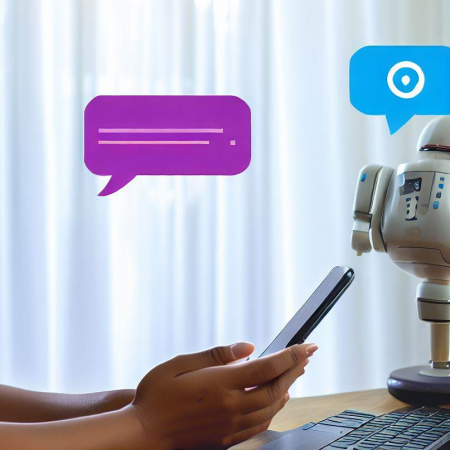Will Emails ever be replaced by something else more ground breaking, wonders Uma.
Emails replaced the standard ‘snail-mail’ and ‘post office’, however, 40 years on since its inception, has much changed? Let’s look back on the changing face of human connection and communication.
Imagine the year 1990, my grand father used to visit the local post office and buy blue inland letters, stamps of various denominations, and yellow postcards to replenish the stock to avoid emergencies. When people in our family got married, the standard practice was to send the wedding invites by post along with a personal yellow card with additional details. Anything less was considered impersonal.

Stamps, telegrams, chain mails and letters an era gone by
International letters meant that we will get foreign stamps! Surprise letters from loved ones were precious. US/UK/Mongolia, people used to make friends or penpals from all over the world to collect stamps. Those who were born in the 70s and 80s may remember chain letters, where we did not want to break the chain of letters and send chain mails to 10 / 20 people. Telegrams were dreaded, used mainly for uber emergencies and limited word count ! ‘Aunt from Madras Expired, please shower immediately’, it would read. Expiry is for medicines and products I would think! My grandfather also used to have a precious plastic butter knife to open the blue inland letters.
Email IDs were personal
The first email id mostly our ‘birth year’ or ‘age’ as a suffix, which GDPR rules will not agree with now. ‘Speedmaniac_86@hotmail.com’ would be an acceptable email id with a ‘personal touch’! However, since emails were conceived and released in the 1970s, not much has changed. The fluttery feeling of ‘You’ve got e-Mail’ was a popular adage and a tagline in movies and the sight of new emails was titillating. We may not say the same now with the number of junk marketing mails we get.
The number of ‘surprise letters’ one would get used to were precious! For the generation that is reading this article, it may be nostalgic! Nonetheless, gone are the days of penpals, the first email id had our ‘birth year’ as a suffix, which GDPR enthusiasts will now look down upon. Since emails were conceived and released in the 1970s, not much has changed. The fluttery feeling of ‘You’ve got e-Mail’ was a popular adage and a tagline in movies and the sight of new emails was titillating. With the flurry of junk mails, the sight of ‘You’ve got EMail’s’ may now get really annoying.

The history:
The history of email can be traced back to the early days of computers. In 1965, Ray Tomlinson, an engineer at Bolt Beranek and Newman (BBN), developed the first email program. He used it to send messages between two computers on the ARPANET, a precursor to the internet.
Email quickly became popular on the ARPANET, and by the early 1970s, it was being used by thousands of people. In 1972, Vint Cerf and Bob Kahn developed the Transmission Control Protocol (TCP), which allowed computers to communicate with each other over long distances. This made it possible for email to be sent between computers on different networks.
Commercial email services were not left far behind. In the 1980s, email became even more popular with companies such as CompuServe and America Online.

Present:
Gone are the days of deleting emails to create space, emails have evolved for better organization, optimisation and storage in recent times. From simple text and HTML formats, it has evolved to create a more dynamic and interactive response based medium. With cloud storage capabilities, emails can be accessed from virtually anywhere and size is not a constraint at all.
Content driven: Emails are now a medium for sending content for Financial organisations, marketing companies and others where one can unsubscribe to promotional material at a click of a button. Multimedia and other content can now be added to the body of the email.
Responsive medium: Emails can be accessed on virtually all devices with the same facilities including social media integration.
Junk detection: Most email systems now can identify and archive junk for a period of time before purging and also identify security threats where possible.

Newest first with unlimited storage: With storage increasing dramatically, newest emails are kept on the top with a view to pulling older emails from the cloud enhancing user experience where only relevant information is shown. Distributed storage also ensures that the right information is shown as quickly as possible without a significant time to cache the information.
Autocorrect: However, ‘lackadaisical’ this might sound like emails have evolved and how! I didn’t have to think twice about knowing the spelling of words which were difficult, including suggesting various options and edits. I did not put a ”’ in ‘didn’t’ and it fixed it for me. Simple yet profound impact!
Autowrite feature: Google and Microsoft have introduced a fantastic option of autowrite and suggestive response options. We can simply click on ‘Thank you’ or ‘Much appreciated’ for simple responses to avoid taking time to write anything. Additionally, creative writing has taken a new turn on how to write inspiring emails as well. Writing apologies and condolences / sorry messages were always tough. No more, thanks to predictive email writing.

Future of Email:
No discussion is ever complete without a mention of Artificial Intelligence or AI. Emails in the future may move to sending auto responses where possible, however, that needs to be managed cautiously. While automation is a great benefit, basic aspects like including interests, name, and basic information can be included in the learning patterns of how one would have a signature of their style in the emails. The future may decide on when emails reach an inbox to avoid busy times, however, most of this helps in a commercial set up as personal uses may vary.
From a luxury and a choice, emails have now become a necessity. But will Emails ever be replaced by something else more ground breaking is only for time to tell.
In case you missed:
- None Found









